 |
|
|
red
seaweeds text index
| photo index
|
| Seaweeds > Division Rhodophyta > Family Gracilariaceae > Genus Gracilaria |
| Knobbly
agar-agar seaweed Gracilaria salicornia Family Gracilariaceae updated Jan 13 Where seen? Small clumps of this distinctive knobbly seaweed is sometimes seen on many of our shores, on bare sand or attached to rocks and coral rubble. Features: 'Stem' made up of succulent club-shaped structures (each about 1-3cm long) joined together. May form loose clusters of long 'stems' (10-15cm)'. Or dense clumps of short 'stems' (1-3cm) growing low against rock or coral rubble. Black or brownish with only the slightest tinge of red, sometimes yellowish brown. Human uses: It is used as animal feed, and fertiliser for coconut trees and coffee bushes in China, India and Sri Lanka. Like other Gracilaria species, it is also a source of agar-agar and is eaten as a jelly and as a 'crunchy' snack. Other uses include as an insect repellant and to treat knee joints, sores, heart complaints, stomach and intestinal disorders. It is reported to have anti-bacterial and anti-tumor properties. |
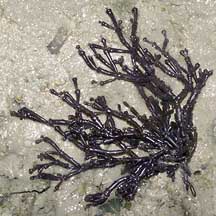 Chek Jawa, May 05 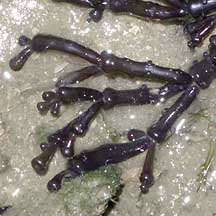 |
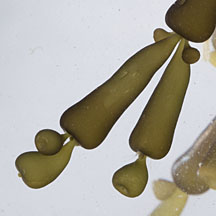 Chek Jawa, Feb 12 |
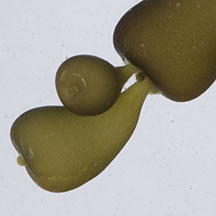 Chek Jawa, Feb 12 |
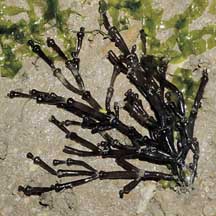 Tuas, Jul 06 |
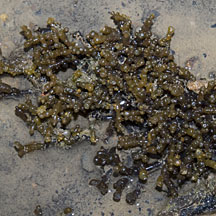 Pulau Semakau, Aug 11 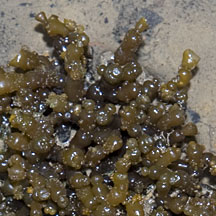 |
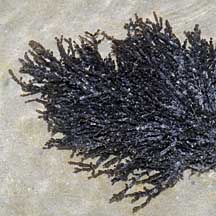 Tanah Merah, Dec 09 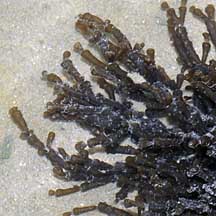 |
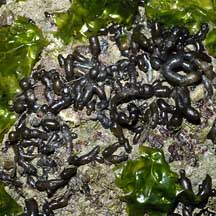 Labrador, Jun 05 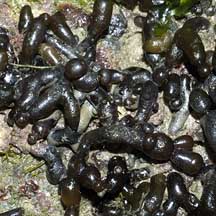 |
*Seaweed species are difficult to positively identify without microscopic examination.
On this website, they are grouped by external features for convenience of display.
| Knobbly agar-agar seaweeds on Singapore shores |
| Photos of Knobbly agar-agar seaweeds for free download from wildsingapore flickr |
| Distribution in Singapore on this wildsingapore flickr map |
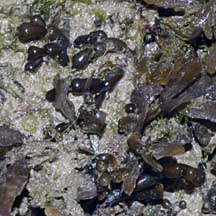 Pulau Pawai, Dec 09 |
Links
|
|
|